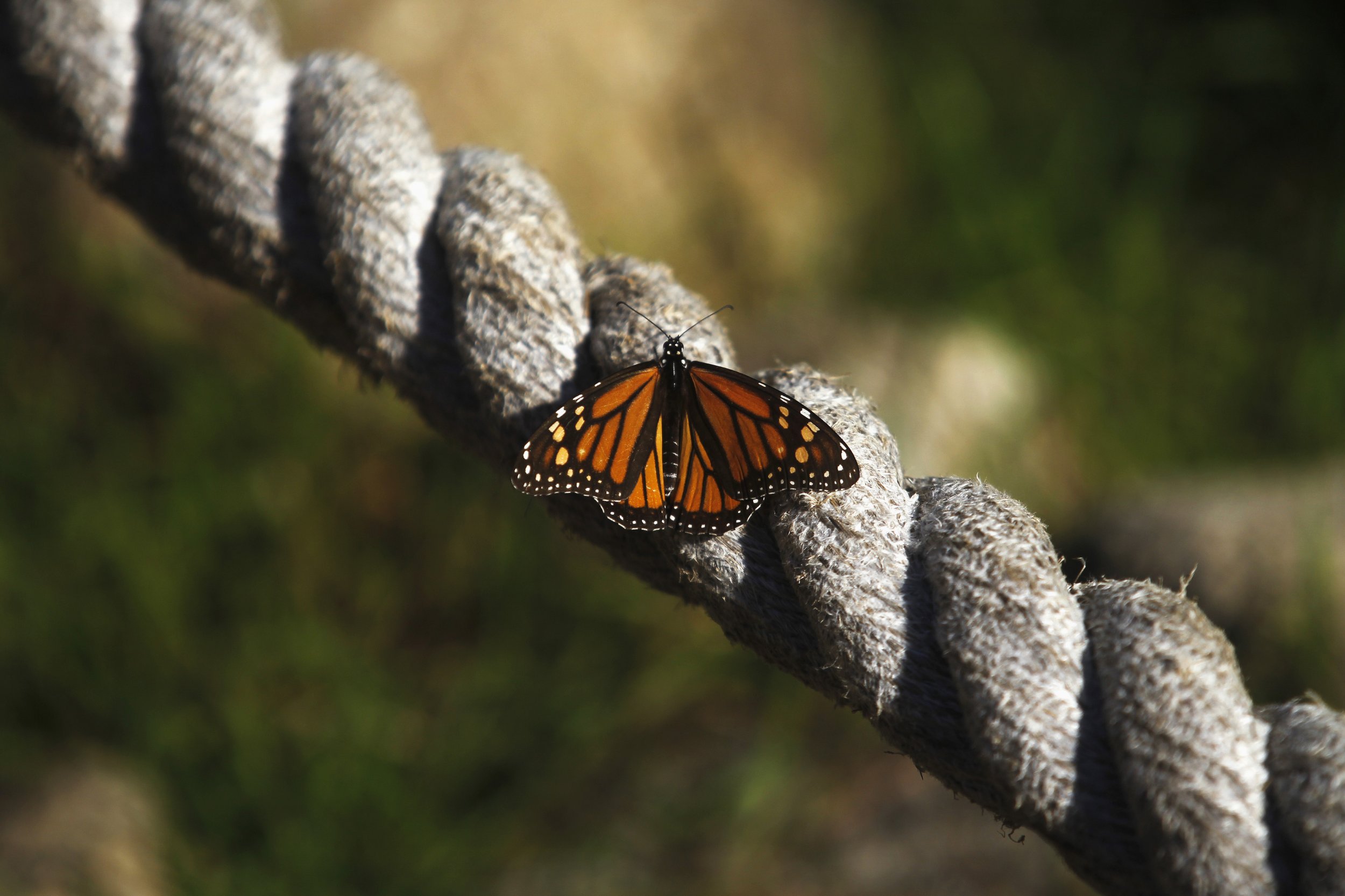
There are tens of thousands of wasp species that make their living by parasitizing other insects, like butterflies and moths. In a typical scenario, a parasitoid wasp stings a caterpillar, injecting eggs or larvae (depending on the species) into the small animal during the process. The eggs will then grow into larvae, which feast on the caterpillar without immediately killing it. After a short amount of time—10 days is typical—the larvae emerge, make a cocoon and then begin to transform into an adult wasp. And the caterpillar usually dies.
The sheer quantity of wasps that behave this way may make it seems banal, but it's quite an extraordinary talent; it's no small task to disable another creature, while keeping it alive, as your progeny grow and feast from within.
The story of how the wasps do this stretches back well over 100 million years, when the insects did a curious thing: They joined forces with a virus, effectively "domesticating it," explains University of Reading geneticist Louise Johnson. Over the years this symbiotic virus, called bracovirus, evolved the ability to insert a variety of genes into the genomes of the caterpillars that these wasps preyed upon. These snips of DNA produce proteins that alter and circumvent the caterpillar's immune system, keeping the creature at bay while the wasp's eggs grew into larvae.
But new research shows that the bracoviruses have also permanently introduced genes into the genomes of several butterfly species, including the iconic monarch butterfly, where it is passed on from one generation to the next, says Jean-Michel Drezen, an expert on insect viruses at the University of Tours, France. And, over the long run, these new bits of DNA have also given the butterflies enhanced resistance to a type of pathogen called baculoviruses. It may be that this originally helped keep caterpillars alive while wasp larvae feasted upon them, and only later gave them a selective advantage, Drezen says.
The finding, described in a study published September 17 in the journal PLOS Genetics, shows that humans are not the only animals capable of producing genetically modified organisms.
"To find genes of [wasps] in butterfly and moth genomes—I was so surprised I couldn't believe it," says Drezen, one of the authors on the study. "I thought at the beginning that there was a mistake somewhere. But we could verify experimentally that it was true."
"When it comes to genetically modified organisms, nature got there first," says Johnson, who wasn't involved in the study. "It's amazing how often humans make a technological innovation only to find out that evolution has [already] come up with it."
Some might see political or policy implications in this. But Drezen and Salvador Herrero, a researcher at Spain's University of Valencia and the study's other co-author, insist that they are not coming out "for or against GMOs."
It's fascinating to find out, however, that some insects are capable of genetically modifying others, he says. "So GMOs are not a novelty [exclusive] to humans," Drezen says.
The research also suggests, however, that genes may be transferred between organisms more easily than we previously thought. This means GMOs, and the foreign DNA we put into them, could possibly wind up in another animal through as-yet unknown mechanisms. And that would suggest caution is important when it comes to genetic modification, Drezen adds.
"The most important implication is to be conscious that there are a lot of things we don't know and that biology is still a science in its infancy," he says. "We do not know what is the extent of gene exchange between organisms such insects."
While there are several known examples of gene transfer between other organisms, the function of such transferred genes isn't usually clear. Eight percent of the human genome, for example, is made up of DNA that originates from viruses, Johnson says. It's thought that some of this genetic material helps our immune systems function better, although exactly how isn't yet known. (Viruses routinely insert their DNA into cells to replicate, although it doesn't usually stick around to be passed onto future generations.)
If caterpillars usually die upon being parasitized, how did the wasp genes get into their reproductive or germ cells, and then passed on to future generations? Drezen says it's possible that caterpillars could have been stung and injected with bracoviruses before fighting off the wasp and living on. Or, perhaps more likely, wasps stung and injected their DNA into the wrong host caterpillar by mistake, where gene transfer successfully took place, but the larvae didn't successful develop and kill the caterpillar.
Uncommon Knowledge
Newsweek is committed to challenging conventional wisdom and finding connections in the search for common ground.
Newsweek is committed to challenging conventional wisdom and finding connections in the search for common ground.
About the writer
Douglas Main is a journalist who lives in New York City and whose writing has appeared in the New York ... Read more





